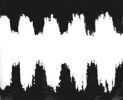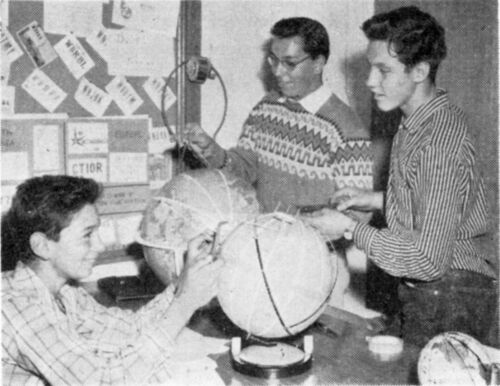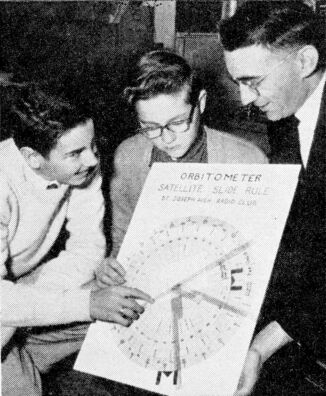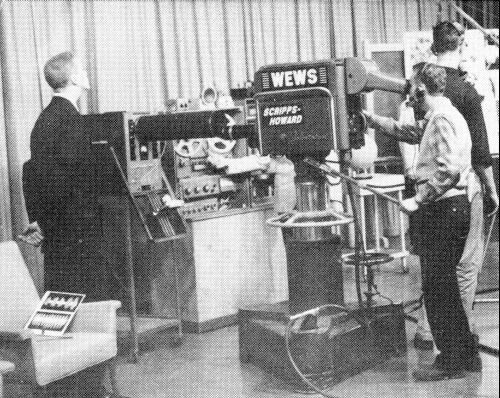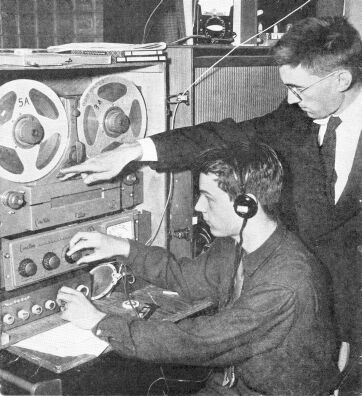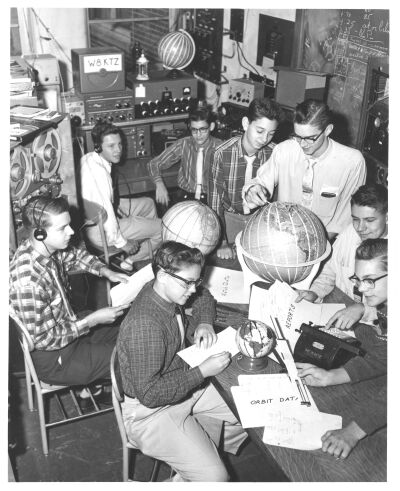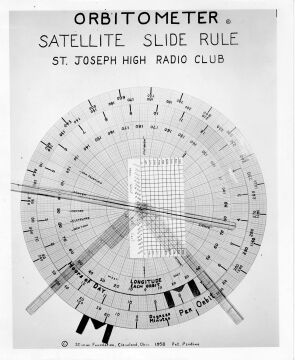October, 1957
Some of The Sputnik Trackers
Back group (L-R): Bernard Kulwin, Rich Robbins, Ed Miller, and Jim Fritz.
Front group: Fred Imm, T. Warner, Mike Cegelski, Dennis Skala, Jim Kitzmiller, Joe Marsey,
David Tommasone, Dennis Tommasone.
Sputnik transmitted on two frequencies. The 20.005 MHz signal was received on an HRO-60
(hidden behind Kulwin and Robbins).
Bob Leskovec had brought in his new NC-109 (behind Fritz) which went up to 41 MHz, and thus the group
was able to receive the 40.002 MHz signal.
Recordings were made at 7.5" per second on the 10" reel-to-reel Concertone
Tape Recorder (above Fred Imm).
Local broadcasters, especially Chief Engineer Howard Spiller at KYW-AM Radio 1100,
helped out by donating more tape as the club supply got quickly used up.
Photo by Mike Stimac
|
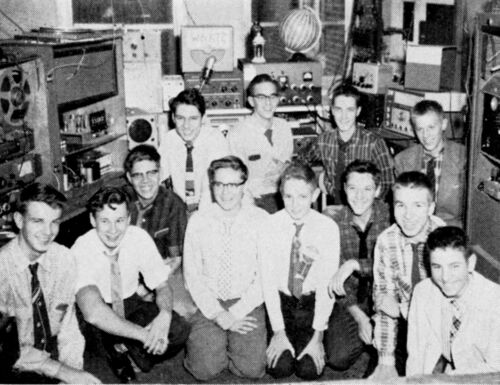 |
